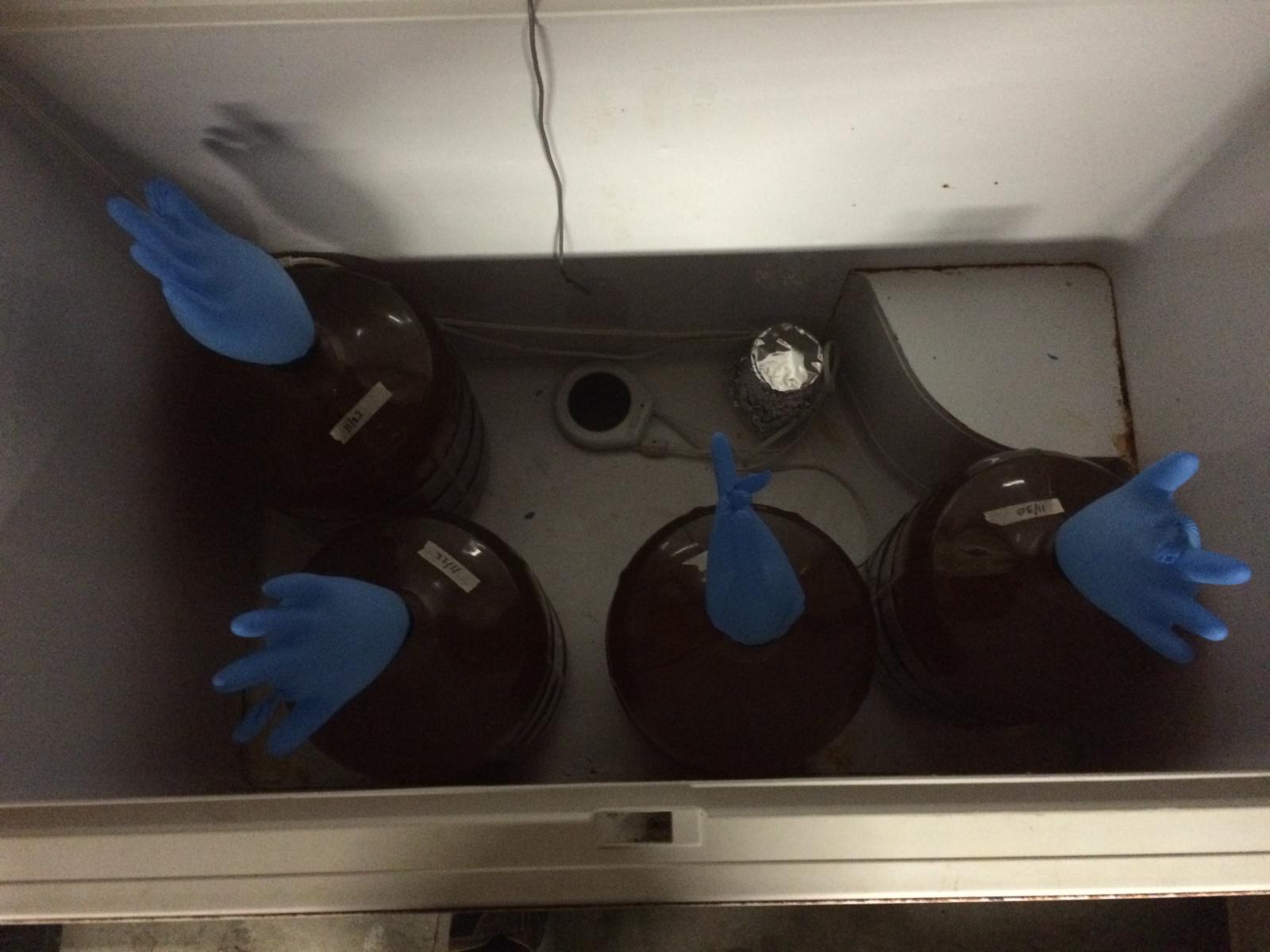If you have ever cold crashed beer after fermentation you realize the advantages of the process, e.g. clear beer with reduced maturation time. However, we are often concerned with the fact that air is introduced into the fermentor bringing with it possible contamination and oxidation. My concern is oxidation and it goes beyond just the exposure to air that is brought into the headspace.
Unfortunately, I do not understand the ability of a liquid to dissolve gas into solution but I know it happens. I think I know, for example that beer at 72F contains less dissolved gas (CO2) compared to beer at 40F (at atmospheric pressure). And I think that a gas will be dissolved into a liquid according to the amount the liquid can hold at a certain temperature and pressure. I also think that as beer is cooled it reduces in volume and that's why air is sucked into the fermentor. So when we cold crash beer it will try to find that equilibrium and dissolve a significant amount of whatever gas is available. I'm not a mathematician either but using a bottle conditioning calculator, through trial and error, I found (if correct) beer at 40F can hold ~0.57 volumes of gas more than beer at 72F. That seems like a lot of gas and if even part of it were air that may be a significant amount of O2. So if my understanding is correct, the air that is being taken into the fermentor is not just mixing with the CO2 in the head space but the cold beer is "sucking" it into solution.
Please excuse my lack of knowledge and correct terminology on this subject. If my thoughts are comprehensible, please express your opinion of this thesis.
Unfortunately, I do not understand the ability of a liquid to dissolve gas into solution but I know it happens. I think I know, for example that beer at 72F contains less dissolved gas (CO2) compared to beer at 40F (at atmospheric pressure). And I think that a gas will be dissolved into a liquid according to the amount the liquid can hold at a certain temperature and pressure. I also think that as beer is cooled it reduces in volume and that's why air is sucked into the fermentor. So when we cold crash beer it will try to find that equilibrium and dissolve a significant amount of whatever gas is available. I'm not a mathematician either but using a bottle conditioning calculator, through trial and error, I found (if correct) beer at 40F can hold ~0.57 volumes of gas more than beer at 72F. That seems like a lot of gas and if even part of it were air that may be a significant amount of O2. So if my understanding is correct, the air that is being taken into the fermentor is not just mixing with the CO2 in the head space but the cold beer is "sucking" it into solution.
Please excuse my lack of knowledge and correct terminology on this subject. If my thoughts are comprehensible, please express your opinion of this thesis.






